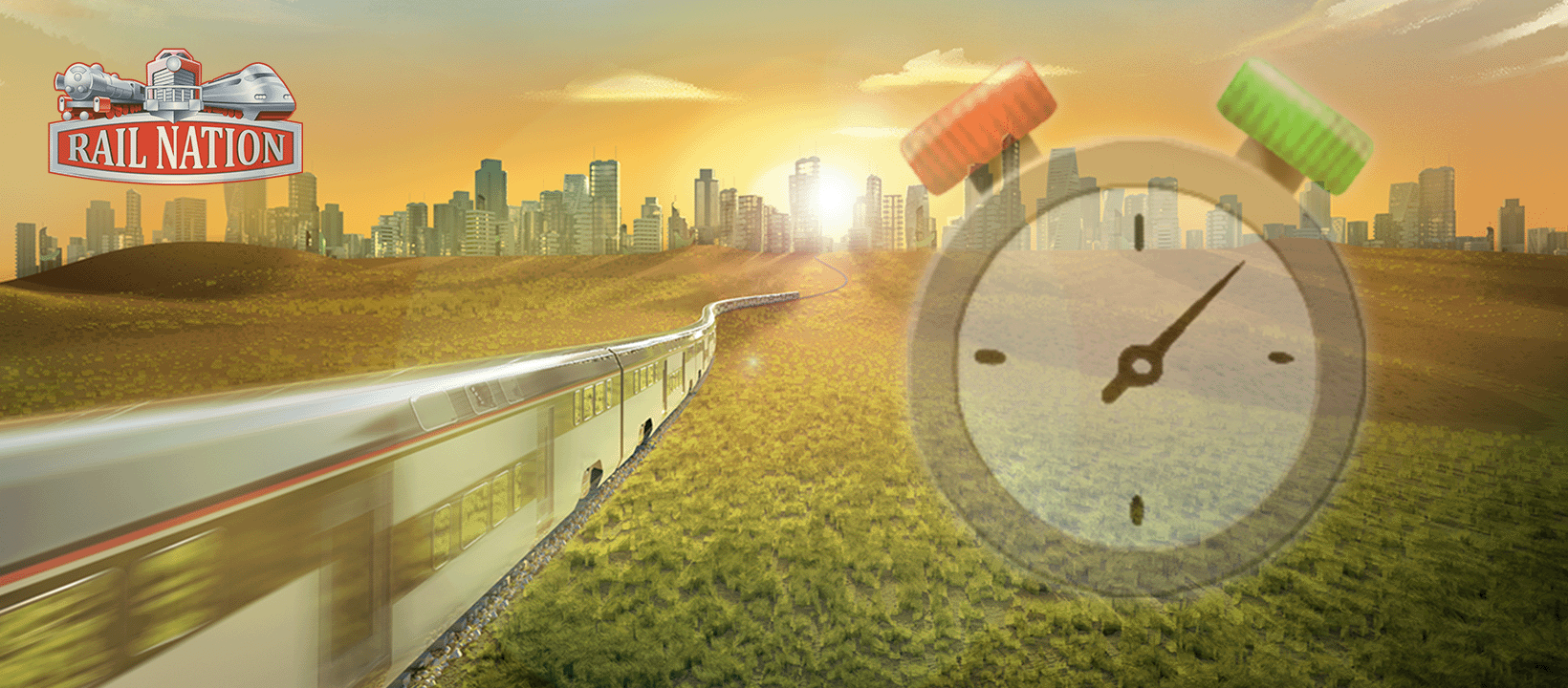
About your trains’ speed and their hourly productivity (Rail Nation 6.6.1)
It’s time to dive into the details about your trains’ overall speed and the changes involved in this version (Update 6.6.1).
This version has introduced an overall reduction of distances from the “Platform X – Titans of Economy” test scenario.
Put simply, the map is divided into “tiles”, whose length has been reduced by 50% (126 m to 63 m to be precise). In gameplay terms, this means that a train with unchanged speed will now cover the same distance two times faster than before.
Distances reduced by 50% = trains are 100% faster? Yes and no…
If we consider the same distance only and no stops, then yes, reducing the distance by 50% is the equivalent of increasing the speed by 2. However, under “real gameworld conditions”, where we consider stops and starts between stations, both the industry waiting times and the acceleration factor play a really big role in the average speed. So, while you’ll now travel faster than before, you may not travel 2x faster due to the acceleration limitations and waiting times.
To ensure everything is synchronised, we have increased the speed of the trains (the display speed on the map) so that it matches the distances they actually cover.
And given your trains travel faster than they used to, and to avoid buffing the faster engines, we have reduced the overall tractive force of all trains. What’s more, we have adjusted several engine statistics to keep the trains balanced among each other. Each engine is now able to carry fewer wagons, and passenger trains fewer passengers. In short: trains are faster, but they carry less. This, of course, implies some modifications to the impact of industry waiting times. For longer waiting times, the train profitability will be less than before; for shorter waiting times, it will be more than before; and for “standard” waiting times, trains will generally be slightly better/more profitable than before.
If one thing seems to cancel out the other, you might ask why we bothered with the change…
Overall, the decision was made to increase the “visible action” on the map at the beginning of each server – to make the game “more vibrant”, as our game designer would say (faster-looking trains). To achieve this result, “buffing” entry trains would have caused more problems than it would have solved (by unbalancing the game as you know it). On the other hand, buffing some while nerfing others would have taken much more work and inevitably led to core changes that we didn’t want to impose on you – like forcing you to completely re-evaluate your preferences and habits. Therefore, this change was adopted instead.
It also introduces an interesting strategic option for covering longer distances faster than before, in the event that local industry times are reducing your income. We believe that now, hauling over more significant distances is a natural alternative in case of cluttered zones.
We hope this explanation was clear enough. For any upcoming changes that may affect your gameplay like this one, we will try to provide detailed articles to keep you up to date with everything.
See you on the tracks!